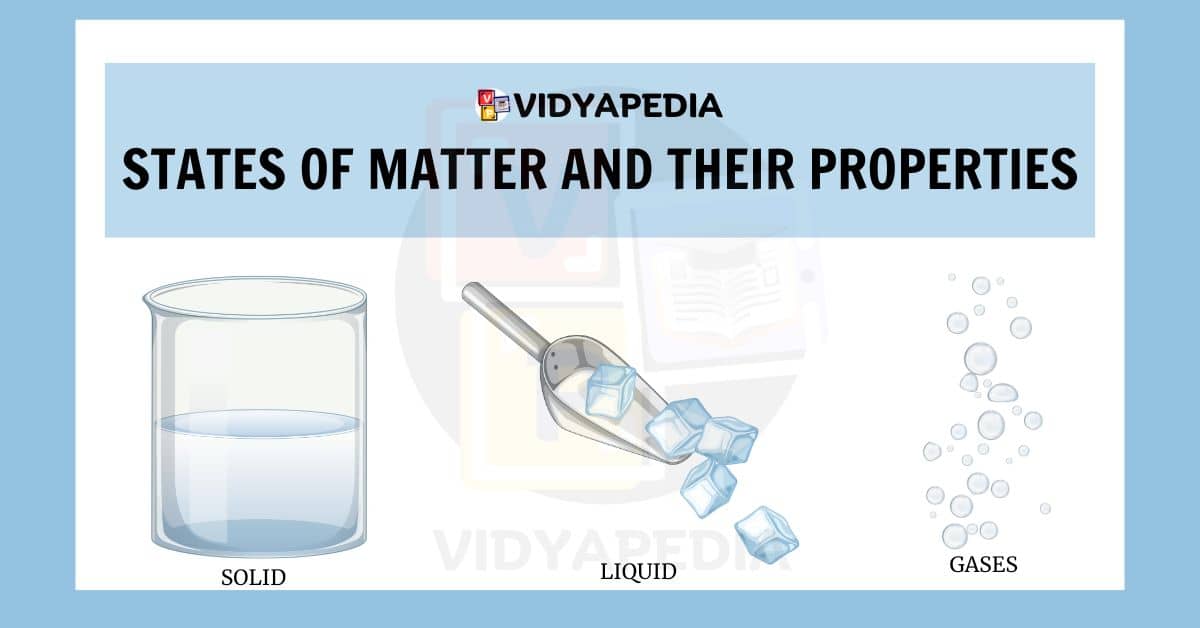Introduction to the Matter States
Matter exists in several states, depending on particle arrangement and behaviour. Matter has three fundamental states: solid, liquid, and gas. These states occur due to changes in the arrangement and movement of particles within each substance. Understanding the characteristics and behaviour of these states is essential for understanding natural phenomena and everyday operations.
States of Matters
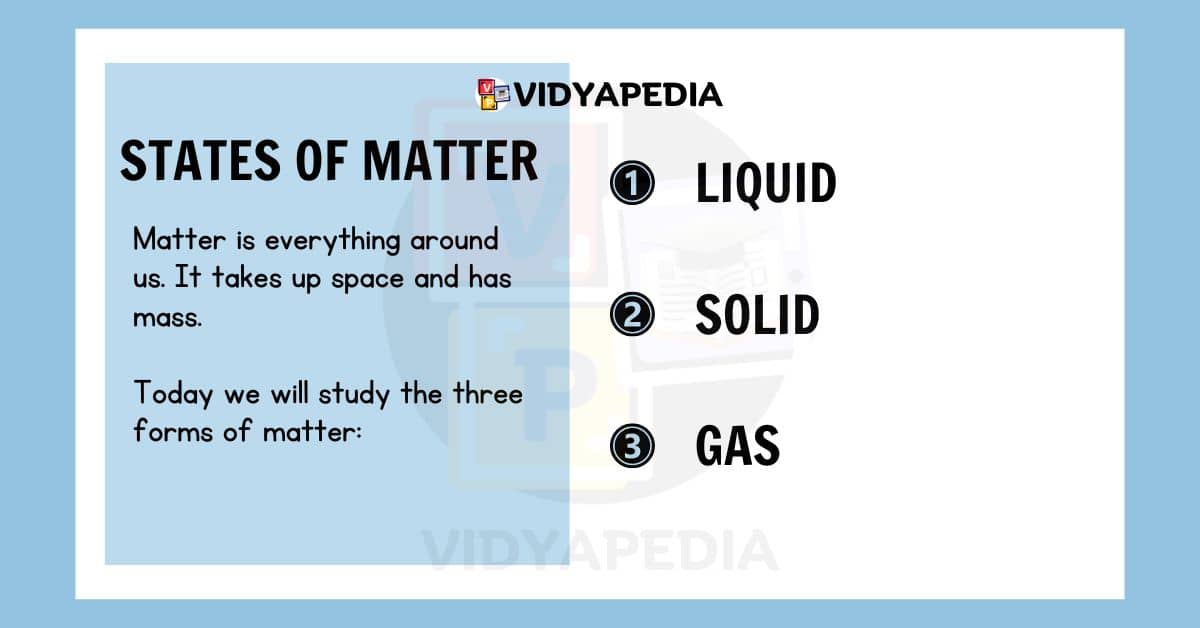
- Solid
- Liquid
- Gas
Read: Characteristics Of Particles of Matters
Introduction of Matter And Physical Nature Of Matter
Solid
Solid matter consists of tightly packed particles that form a regular structure. Solids have a particular shape and volume, and their particles vibrate in specific places. Solids can include rocks, metals, and wood.
Solids’ properties, such as stiffness and resistance to compression, are due to strong intermolecular interactions that hold their particles together. Read Properties In more detail, see below
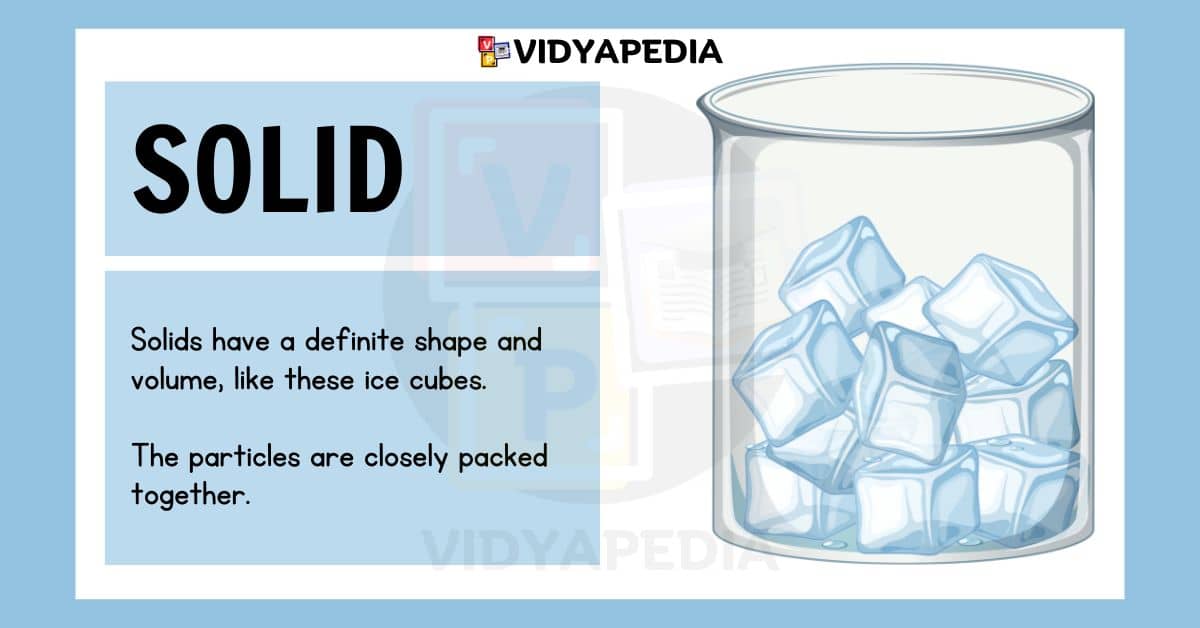
Properties of Solids:
Solids have various unique features that distinguish them from other states of matter. This includes:
- Definite shape: Solids maintain a fixed shape, maintaining distinct boundaries regardless of external forces.
- Fixed volume: Solids have a constant volume, as their particles are closely packed together and do not easily compress.
- Rigidity: Solids are resistant to deformation and maintain their shape when subjected to external pressure or force.
- Negligible compressibility: The particles in solids are arranged closely together, making them difficult to compress.
Examples and Observations
Activities and observations can help demonstrate solid behaviours. Collecting objects like pens, books, and wooden sticks and examining their shape, boundaries, and compression resistance can help demonstrate these features. Furthermore, studying materials like rubber bands, sugar, salt, and sponges can reveal anomalies and nuances in solid behaviour, such as elasticity and compressibility.
Liquid
Liquids, unlike solids, have particles that are less densely packed and can move through each other more easily. Liquids can flow and take on the shape of their container while remaining constant in volume. Examples of liquids include water, oil, and milk. Liquids have fewer intermolecular interactions than solids, allowing them to flow and conform to the shape of their container.
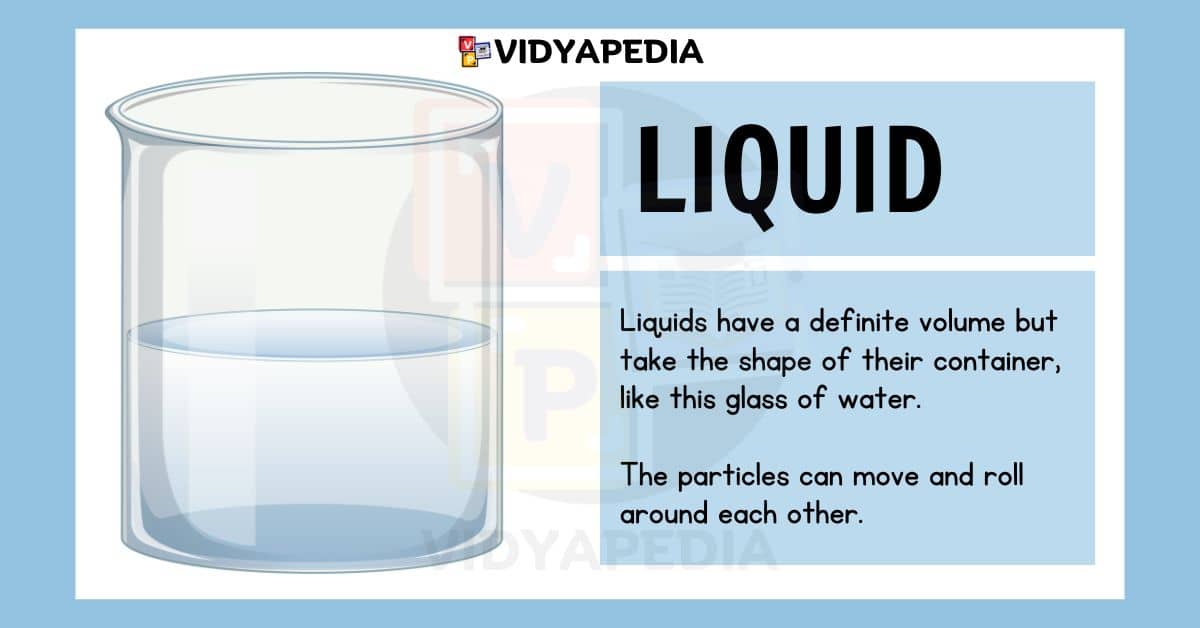
Properties of liquids
Liquids have various characteristics that differentiate them from solids and gases:
- No fixed shape: Liquids take the shape of their container, allowing them to flow and adapt to different vessels.
- Fixed volume: Similar to solids, liquids maintain a constant volume due to the relatively close arrangement of particles.
- Fluidity: Liquids flow freely, allowing them to change shape and adapt to external conditions.
- Partial compressibility: While liquids are less compressible than gases, they can still undergo slight volume changes under high pressure.
Examples and Observations
Gathering various liquids and analyzing their behaviour in different containers may be helpful in demonstrating fluidity and flexibility. For example, by pouring liquids such as water, oil, and milk into various shaped and sized containers, students can observe firsthand how liquids conform to the shape of the container while maintaining a consistent volume. This practice teaches children that liquids do not have a distinct shape of their own and instead take on the shape of the container into which they are poured.
Furthermore, experiments that combine liquid mixing and solid interaction allow the study of additional issues such as diffusion and solubility. For example, students can do experiments in which they mix different liquids and observe how they diffuse into one another. Students can demonstrate the theory of diffusion in liquids by adding food colouring to the water and placing it in an oil bottle.
Gas
Gas particles can be identified by their high kinetic energy and huge separations. Gases do not have a definite shape or volume and occupy all available space. Examples of gases include oxygen, nitrogen, and carbon dioxide. Compressibility and rapid mobility are characteristics of gases caused by weak intermolecular connections and the high kinetic energy of the particles.
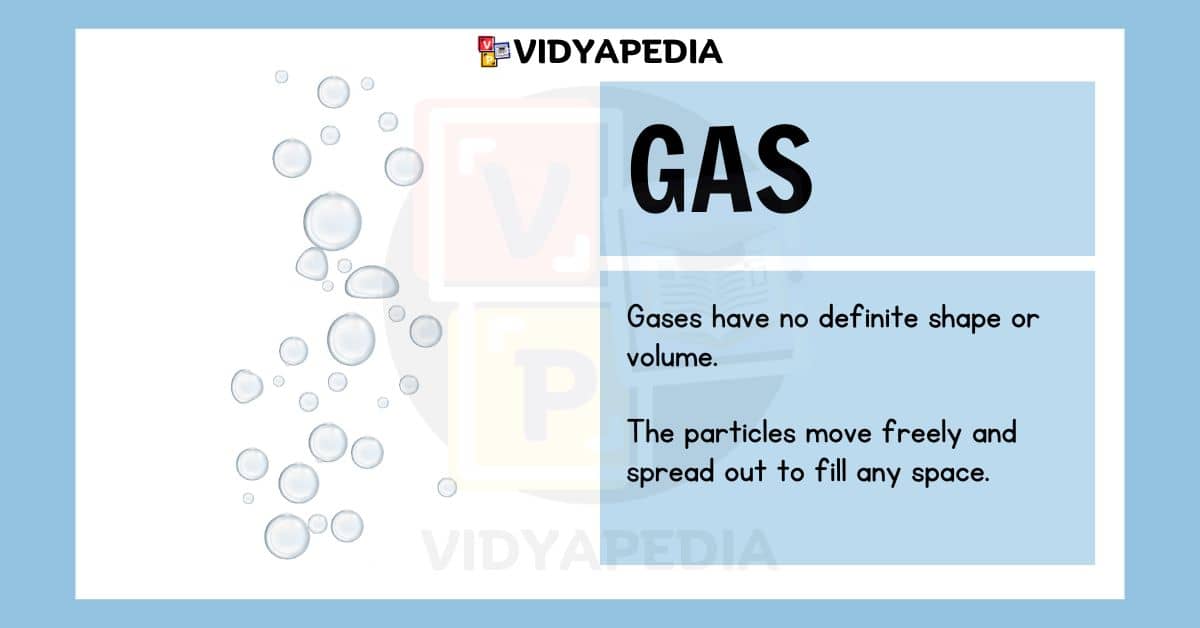
Properties of Gases
- No fixed shape or volume: Gases expand to fill the container they occupy, taking on the shape and volume of their enclosure.
- High compressibility: Gas particles are widely spaced and can be compressed into a smaller volume under pressure.
- High mobility: Gas particles move rapidly and randomly, colliding with each other and the walls of their container.
- Low density: Gases have low mass per unit volume due to the significant space between particles.
Examples and Observations:
Activities requiring gas compression, such as filling balloons or examining the behaviour of gas-filled syringes, can demonstrate gases’ compressibility and expansion. Experiments with gas diffusion and gas pressure monitoring can also show their mobility and interaction with the environment.
Properties Of Solid Liquids and Gases
| State of Matter | Characteristics | Examples | Properties |
|---|---|---|---|
| Solid | Definite shape, fixed volume, rigidity, and negligible compressibility | Rocks, metals, and wood | maintains a fixed shape constant volume, resistant to deformation, difficult to compress |
| Liquid | No fixed shape, no fixed volume Fluidity and Partial compressibility | Water, oil, milk | – Takes shape of container – Maintains constant volume – Flows freely – Slight compressibility under pressure |
| Gas | Definite shape, fixed volume, rigidity, and negligible compressibility | Oxygen, nitrogen, carbon dioxide | – Expands to fill container – Easily compressed – Rapid, random movement – Low mass per unit volume |
F.A.Q.’s
What are the primary states of matter?
The primary states of matter are solid, liquid, and gas. Each state is characterized by the arrangement and behaviour of its particles.
What distinguishes solids from liquids and gases?
Solids have a fixed shape and volume, with particles tightly packed together in a regular arrangement. Liquids, on the other hand, take the shape of their container but maintain a constant volume, while gases have neither a fixed shape nor volume and expand to fill the space available to them.
How does temperature affect the states of matter?
Temperature influences the states of matter by affecting the kinetic energy of particles. Higher temperatures increase the kinetic energy, causing particles to move more rapidly and leading to changes in state, such as melting (solid to liquid) and evaporation (liquid to gas).
Why does air movement contribute to evaporation?
Air movement contributes to evaporation by continuously removing water vapor from the vicinity of the liquid surface. This removal maintains a low concentration of water vapor, allowing more liquid particles to evaporate and enter the air.

